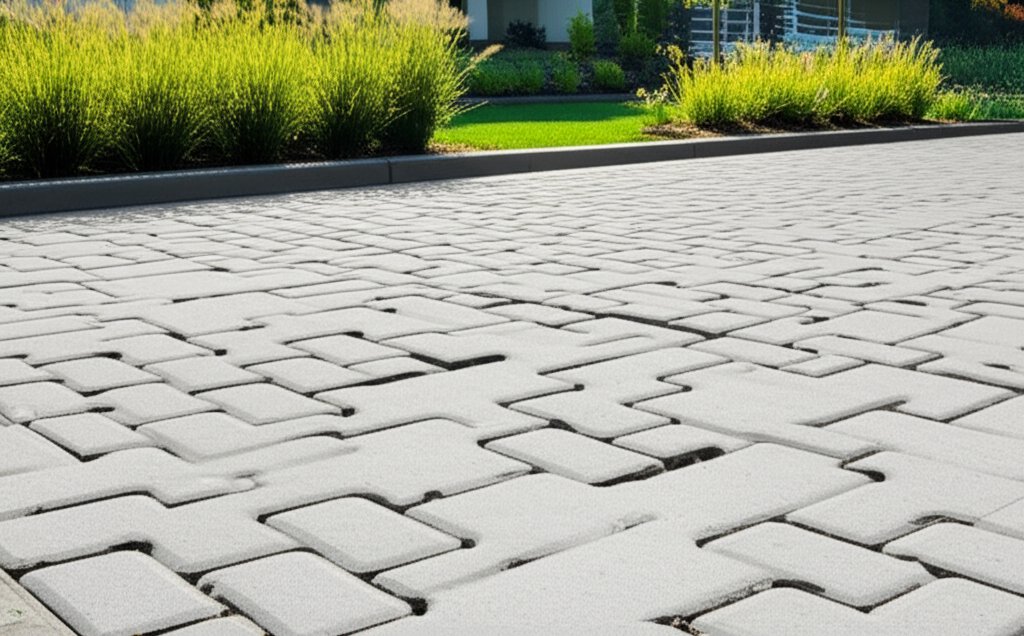Transform Your Landscape with Porous Driveways in 2025
As I wander through neighborhoods each season, I see how driveways shape the essence of a home's exterior. They are more than mere pathways for cars; they set the tone for the entire property. Yet, many homeowners miss the chance to make these spaces sustainable. Porous driveways offer a solution, blending striking design with environmental responsibility, reducing stormwater runoff, and enhancing curb appeal with thoughtful functionality.
Understanding Porous Driveway Technology
Conventional driveways, often crafted from solid concrete or asphalt, repel water, sending it racing toward storm drains rather than allowing it to soak into the earth. Porous driveways, by contrast, are engineered with intentional gaps or voids that permit rainwater to permeate the surface. Underneath lies a base of gravel or crushed stone, which temporarily holds water before it gradually seeps into the soil. This innovative structure curbs runoff, replenishes groundwater, and lightens the load on municipal drainage systems, fundamentally altering how a property engages with its natural surroundings.
Exploring Porous Driveway Material Options
Homeowners have a variety of materials to choose from, each offering a unique balance of style and practicality:
- Porous asphalt and concrete: These mimic the look of traditional paving but are formulated with tiny openings that allow water to pass through, ideal for a seamless, modern aesthetic.
- Permeable pavers: Interlocking units, typically made of concrete or stone, feature gaps filled with gravel or grass, combining durability with water filtration.
- Gravel surfaces: A timeless and budget-friendly option, gravel naturally allows water to drain, though it demands regular upkeep to maintain a tidy appearance.
- Grass pavers: Plastic or concrete grids filled with soil and grass create a lush, green surface strong enough for vehicles while promoting drainage.
Selecting a material often depends on personal taste, budget constraints, and the level of maintenance one is willing to commit to over time.
Matching Style to Your Home’s Character
The visual impact of a porous driveway can redefine your property’s atmosphere. Gravel or grass pavers evoke a relaxed, rural charm, perfectly suiting a cozy cottage or farmhouse. Porous concrete, with its clean lines, complements contemporary or urban homes seeking a polished look. Permeable pavers, available in intricate patterns, can introduce a formal elegance, while loose gravel offers a more organic, understated presence. Consider how the driveway will harmonize with your home’s architecture and surrounding landscape to create a cohesive design that feels intentional.
Key Advantages for Homeowners and the Environment
Beyond their visual appeal, porous driveways deliver substantial practical benefits. Water drains directly into the ground, minimizing puddles and slippery surfaces after rainfall. This absorption also reduces soil erosion around the property, safeguarding landscaping investments. Nearby trees and plants often thrive with improved access to moisture that would otherwise wash away. Additionally, these surfaces contribute to sustainability by filtering pollutants from rainwater and supporting natural water cycles, while potentially lowering long-term maintenance expenses for homeowners.
Keeping Your Porous Driveway in Top Shape
Maintaining a porous driveway requires a different focus compared to traditional surfaces. The primary task is ensuring the gaps or pores remain unclogged to allow water to flow freely. Regular sweeping or vacuuming removes debris, and occasional gravel replacement may be necessary for certain designs. Preventing weed growth or moss buildup in the spaces is also key. For those seeking minimal upkeep, porous asphalt or concrete might be the better choice, while gravel or grass pavers appeal to individuals who enjoy a more hands-on approach to property care.
Testing the Waters with Smaller Projects
Committing to a full driveway overhaul can feel overwhelming, so starting small is a sensible strategy. Consider installing a porous parking pad, a side walkway, or a patio extension to test how these materials perform in your specific climate and soil conditions. These pilot projects provide immediate environmental benefits and offer insight into maintenance needs. Repeating the chosen material in other areas, such as garden borders or pathways, can unify the landscape design, creating a polished and purposeful look across the property.
Embracing a Sustainable Landscape
Choosing a porous driveway is a meaningful decision that reflects a commitment to both aesthetic value and ecological stewardship. Over time, this feature integrates into the rhythm of daily life, transforming rainfall into a resource that nourishes the earth rather than a problem to manage. Plants flourish with retained moisture, and the driveway evolves from a stark utility into a vital component of the garden. Reflect on how this choice aligns with your long-term vision for your home and landscape, ensuring it supports both your lifestyle and environmental goals.
